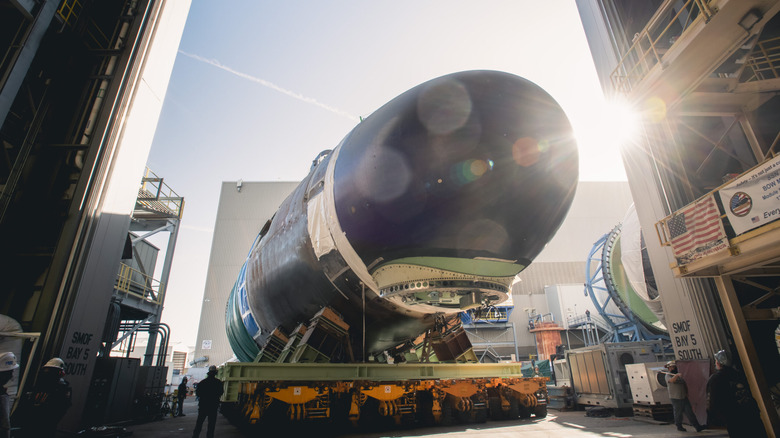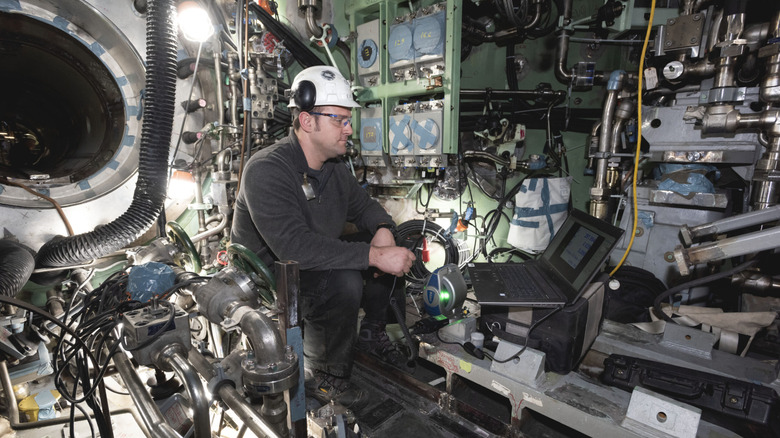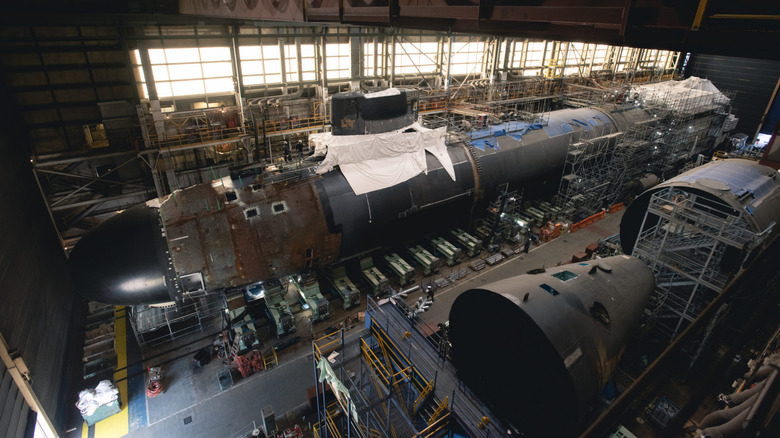One Of The World's Most Advanced Nuclear Powered Submarines Completed Its First US Test
Newport News Shipbuilding and General Dynamics Electric Boat (GDEB) are readying a nuclear submarine for delivery to the U.S. Navy. Christened in May 2023, the Virginia-class attack sub USS Massachusetts (SSN-798) recently underwent a series of seafaring tests, which included the vessel's first submergence, as well as its first high-speed maneuvers underwater and on the surface.
Massachusetts is one of 25 Virginia-class attack submarines, and the twelfth built by Newport News Shipbuilding, one of only two U.S. shipyards — along with GDEB — capable of constructing nuclear-powered submarines. It is one of 10 nuclear-powered subs commissioned by the U.S. Navy as part of a $17.6 billion contract the military awarded to GDEB.
Engineered to deliver next-level endurance, mobility, and stealth via nuclear propulsion technology, Massachusetts and its many fleet siblings are designed for modern anti-submarine and anti-surface warfare, and are capable of launching Tomahawk missiles, collecting intel, carrying out mine warfare, and special operations forces deployments. It is also the first vessel to receive the "Massachusetts" moniker since the USS Massachusetts (BB-59) battleship, which was officially decommissioned after World War II in 1947.
Massachusetts is a next-gen submarine built for modern warfare
At 377 feet long and 7,800 tons, and driven by a nuclear reactor, Massachusetts stands as a state-of-the-art submarine that marks a major advancement in the U.S. Navy's offensive and defensive capabilities. The reactor itself is one of the main marvels of the sub, allowing for extended periods of submergence and a near-unlimited operation range. And with its single-shaft design, Massachusetts is able to channel fission power into a propulsion system, which helps to reduce power losses and acoustic signature.
The more energy-efficient and quieter a submarine is, the more formidable it becomes, and Massachusetts is no slouch, reaching underwater speeds of up to 25 knots (around 30 miles per hour). As part of the Block V fleet, the vessel also features the Virginia payload module: an extended midsection that gives the boat another four payload tubes, giving the sub the ability to launch up to 40 Tomahawks at a time. Massachusetts' modular design is another triumph for the U.S. Navy. Modernization can be carried out within the same hull, saving time and cost while extending service life. This bodes well for AI-assisted advancements in submarine technology, from sonar operations to mission planning and critical health monitoring systems.
In an interview with Military.com, Rear Adm. Mark Heinrich underscored the importance of the Block V Virginia-class submarines in the Pacific theater. "The key for the Virginia-class Block V is that it will replace the SSGNs," he said, referring to the current nuclear-powered guided missile submarines that have been in service since 2007. "When they do, they'll be very relevant players in the Pacific — a submariner's playground, deep, maneuverable, and full of opportunity for training in real-world environments."
Replacing Cold War workhorses with next-gen power
When the first Virginia-class nuclear subs were delivered to the U.S. Navy back in 2004, they began replacing the Los Angeles-class subs, a staple of the U.S. Navy for well over four decades. While a bit faster than the Virginia vessels, the Los Angeles–class boats are much louder, require refueling, and can only hold 12 Tomahawks at a time, compared to the 40-missile capacity in the Block V boats.
Many Los Angeles–class subs are already decommissioned, and the U.S. Navy's contract with GDEB was modified this past April for the order of two more Block V subs: USS Baltimore (SSN-812) and USS Atlanta (SSN-813). As of 2025, the U.S. Navy has added 24 Virginia-class subs to its fleet, and it'll only be a matter of time before these new boats completely replace their Cold War ancestors.
There's no denying the significant foothold the U.S. Navy has when it comes to underwater warfare, and with each new Block V (and upcoming Block VI and VII) sub the military receives, the stronger and more reactive America's undersea presence becomes.


